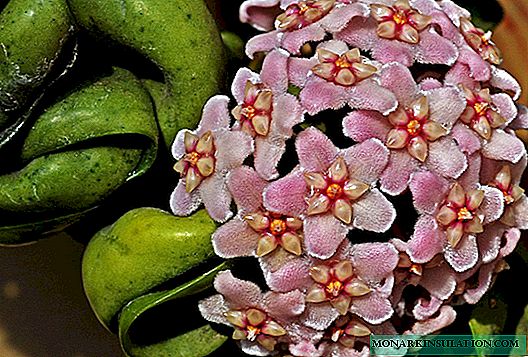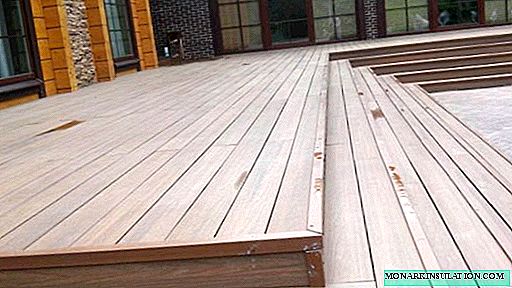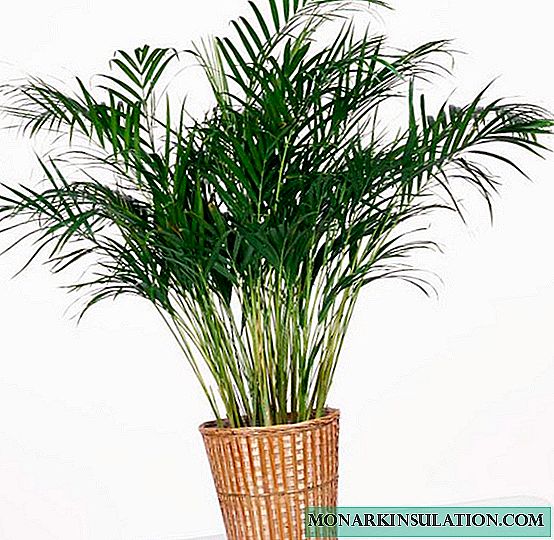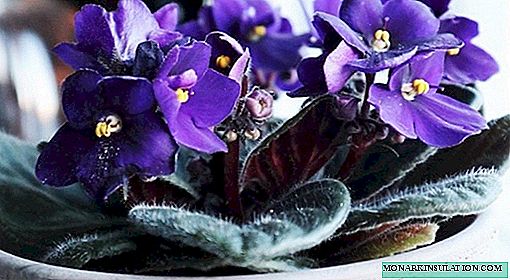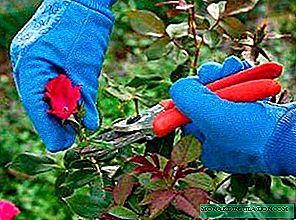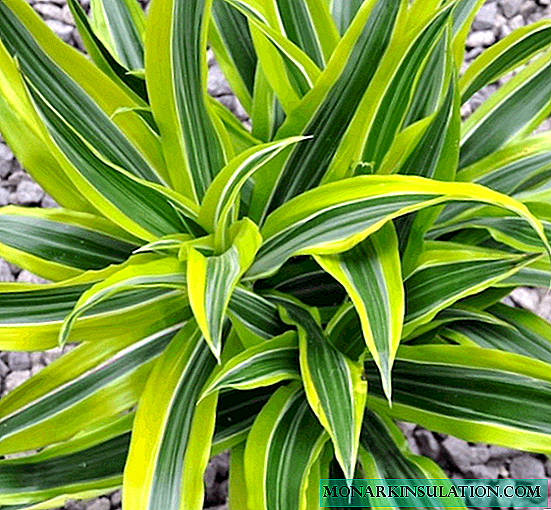
Cucumbers are traditionally loved by Russians. Each gardener on his plot tries to allocate at least a small bed for them. Thanks to the efforts of breeders, it became possible to obtain a plentiful crop of greenhouses in almost all regions. Varieties of cucumbers are presented in stores in the widest assortment. They differ in fruiting time, crop volume, plant appearance and so on. It is easy to get lost in this variety. Therefore, in order to make a reasoned choice, it is advisable to familiarize yourself with their description, advantages and disadvantages in advance.
Varieties of cucumbers for open ground
Varieties of cucumbers grown in open ground are less demanding on heat. Dimensions of plants can be significant, as the bushes are not limited by the space of the greenhouse. Most often they are characterized by short ripening periods and mass returns to the crop. In the absence of immunity, these varieties are more susceptible to diseases than those intended for cultivation in closed ground, especially if it is rainy and often rainy in summer.
Table: The best varieties of cucumbers for growing without shelter
| Grade name | The most suitable region for growing | Ripening time | Self-pollinating | The appearance of the bush | Type of ovary | The presence of immunity | Dangerous diseases | Appearance and taste of fruits | Productivity, fruiting | Other characteristic features |
| Beam splendor F1 | Zoned for the Urals, but well suited for other regions | Early (42-45 days) | Yes | Branching is not particularly active | Bunch, 3-7 fruits | Powdery mildew, cladosporiosis, mosaic virus | Peronosporosis | Zelentsy a little tapering to the peduncle. Their length is 8-11 cm. The thorns are small, whitish, the edge is thick. The skin is covered with thin longitudinal strokes. The taste is genetically devoid of bitterness. The pulp is dense, sweet, with a characteristic crunch that persists even when canned | Fruiting continues until the first frost. Up to 400 cucumbers (about 40 kg / m²) are removed from the plant | The plant is sensitive to a deficit of light, does not suffer from temperature jumps. The only possible way to "lead" the plant - in one stem. Flowers are mainly female |
| Courage F1 | No limits | Early (40-43 days) | Yes | Bush of indeterminate type (not limited in growth), powerful | Bunch, 2-10 fruits | Rarely affected by any fungal diseases, does not have absolute immunity | Mosaic virus | Zelentsy reaches a length of 11-14 cm and gain weight 100-120 g, slightly ribbed. The lower third is covered with vague whitish stripes. The tubercles are numerous, medium-sized. The edge is thick white. Flesh with a rich aroma, completely without bitterness | 16-18 kg / m² | Flowers are mainly female |
| Herman F1 | No limits | Early (36-40 days) | Yes | Determinant bush | Beam, 4-6 fruits | Cladosporiosis, mosaic virus, powdery mildew | Rust | Zelentsy weighing 70-90 g and a length of 10-11 cm. The skin is covered with weakly visible light stripes and spots. The intensity of its color depends on the lighting. The fruit is clearly ribbed, tuberous, the edge of the white. Pulp of medium density, in principle, without bitterness | 8-9 kg / m². Fruiting lasts until mid-autumn. | It reacts poorly to temperature jumps. The flowers are mostly female. A very low percentage of non-commercial fruits is characteristic - less than 5% |
| Fortress F1 | Black Sea, the middle strip of Russia | Early (40 days) | Not | The bush is determinant, not too actively branching. | Single | Cladosporiosis, peronosporosis, powdery mildew | Mosaic virus | Zelenets weighing 75-100 g and a length of 9-12 cm. The tubercles are numerous, the edge is white. The skin is covered with light stripes and dots. | Up to 12 kg / m² | most of the flowers are female. Proper watering is especially important when leaving. |
| Gerda F1 | No limits | Medium Early (45 days) | Not | The bush is indeterminate, overall, densely leafy, numerous lashes, more than 3 m long. | Tufted, up to 3 fruits | Powdery mildew, peronosporosis | Rot, mosaic virus | The length of the greenhouse is 7-8 cm, the mass is 69-76 g. They do not go beyond the "specified" sizes, retain their original shape. The peel with pronounced quite numerous tubercles, its lower part is streaked with blurry stripes. The edge is whitish, not too thick | Up to 7 kg / m² | |
| Suzanne F1 | No limits | Medium Early (48-50 days) | Yes | The bush is powerful, the central shoot grows to 3.5-4 m | Puchkovy, 3-4 fruits | It successfully enough resists real and downy mildew, the mosaic virus, but still has no “innate” immunity | Rust | Zelentsy reaches a length of 7-9 cm and gain a mass of 80-90 g. The skin is slightly rough to the touch. Small tubercles, not numerous. The flesh without the slightest bitterness | 10 kg / m² | The fruits that have reached the stated dimensions do not overact, do not turn yellow, do not lose their juiciness and taste |
Photo gallery: Cucumbers suitable for cultivation without shelter

- Cucumbers The bunchy splendor of F1 was created for cultivation in the Urals, but they were quickly appreciated by gardeners from other regions
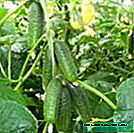
- Cucumbers Courage F1 has a very good resistance to fungal diseases
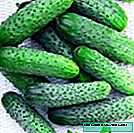
- For cucumbers German F1 characterized by an extended period of fruiting

- Cucumbers Krepysh F1 demanding heat, so in Russia in the open ground they can not be cultivated everywhere

- Gerda F1 cucumbers are very powerful densely leafy plants that need to be formed
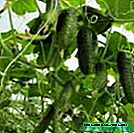
- Suzanne F1 cucumbers - one of the few but very successful achievements of Czech breeders in this area
Video: a description of cucumbers varieties Courage F1
The best varieties for the greenhouse
The most important criteria that you need to focus on when choosing cucumbers for a greenhouse are self-pollination and plant dimensions. It is impossible to guarantee the presence of insects in it. Manual pollination is a rather time-consuming and time-consuming procedure.
Table: Description of cucumber varieties suitable for cultivation in greenhouses
| Grade name | The most suitable region for growing | Ripening time | Self-pollinating | The appearance of the bush | Type of ovary | The presence of immunity | Dangerous diseases | Appearance and taste of fruits | Productivity, fruiting | Other characteristic features |
| Son-in-law | Central | Early (42 days) | Yes | Bush indeterminate, average branching intensity | Beam, 3 or more fruits | Powdery mildew | Peronosporosis | Zelentsy weighing about 90 g, grow up to 8-10 cm. The skin is streaked with blurry pale green stripes. The tubercles are numerous, medium-sized, the edge is densely whitish, the spines are soft. Cucumber, in principle, without the slightest bitterness | Up to 13.2 kg / m² | Unpretentious in leaving. He does not pay attention to hot weather and high humidity. When overgrowing, the flesh and skin retain their hue and density, but the shape of the fruit changes from elliptical to barrel-shaped |
| Mother-in-law | Central, Northwest. But the experience of gardeners indicates that this cucumber also tolerates more severe climatic conditions. | Early (44 days) | Yes | Bush indeterminate, midbranch | Beam, 3 or more fruits | Powdery mildew | Peronosporosis | Zelentsy grow to 10-12 cm and gain a mass of 102 g. The whole skin is covered with fuzzy pale green strokes. The cucumber is small tuberous, the edge is whitish, not particularly dense. Pulp without voids. | 12.2 kg / m² | The flowers are mostly female |
| Pace F1 | It is recognized as the most suitable for cultivation west of the Urals, but successfully survives and bears fruit in conditions of sharply continental climate. | Early (43 days) | Yes | The plant is indeterminate, a few side lashes are formed | Tufted, more than 3 fruits | Cladosporiosis, powdery mildew | Peronosporosis, mosaic virus | Zelenets reaches a length of 6-8 cm and gains a mass of 70-80 g, noticeably tuberous. The lower half is streaked with narrow white strokes. The edge is whitish, sparse. Pulp completely without bitterness and voids | More than 14 kg / m² | Flowers are only female. The variety is very good at drought. |
| Mullet | It shows itself in the best way on the European part of Russia, but also in the Urals, and after it gives good yields | Early (43 days) | Yes | Bush indeterminate, actively branching | Tufted, more than 3 fruits | Powdery mildew | Peronosporosis | Zelentsy grow to 8-9 cm and gain a mass of 95 g. The hillocks are not particularly noticeable, numerous. The edge is not too thick, white. About a third of the vegetable below is covered with vague pale strokes. The pulp is devoid of bitterness | 14.8 kg / m². Fruiting lasts about two months | The flowers are exclusively female. Overripe fruits do not turn yellow, do not outgrow. |
Gardeners reviews
The year before last, cucumbers Barabulka were grown. Planted in the second half of June. Productivity is good, managed to grow. Although we have the south, but the south of Siberia, cucumbers are very good for pickling. Bush ovary, without male flowers.
Nikola 1//dacha.wcb.ru/index.php?showtopic=39538&st=420
I liked the cucumbers very much, Liliput and Murashka are also like that, with a bunch of ovaries. The taste is excellent, do not bite, in the spins crunch.
Lavoda//dacha.wcb.ru/index.php?showtopic=39538&st=420
This year, Barabulka cucumbers were very pleased. I strongly recommend it to everyone. Sweet, hard and excellent for the salad. The children just ate them from the garden, and my mother praised her very much for conservation. Even overgrown (sometimes, miss during the collection) are just as tasty.
Andrey Vasiliev//forum.prihoz.ru/viewtopic.php?t=5792&start=450
In the past, Mullet was planted. But it is subject to such mucks as powdery mildew and spider mites. Processed twice.
Gingeritza//www.newkaliningrad.ru/forum/topic/176800-ogurci/
Photo Gallery: Indoor Cucumber Varieties
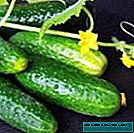
- Zyatyok cucumbers do not pay much attention to heat during the summer

- Mother-in-law cucumbers are not much different from Zyatyok, except that the fruits are slightly larger

- Temp F1 cucumbers stably bear fruit, even if the bushes lack moisture

- Despite the funny name, cucumbers Barabulka due to their undoubted and numerous advantages are very popular among Russian gardeners
High-yielding cucumbers
Productivity is one of the main criteria that gardeners invariably pay attention to when choosing varieties for themselves. The highest possible rates, as a rule, are achieved when planting in greenhouses. And, of course, plants need competent care.
Table: Varieties of Highly Productive Cucumbers
| Grade name | The most suitable region for growing | Ripening time | Self-pollinating | The appearance of the bush | Type of ovary | The presence of immunity | Dangerous diseases | Appearance and taste of fruits | Productivity, fruiting | Other characteristic features |
| Relay F1 | It is universally grown in the European part of Russia, including on an industrial scale | Late (53-66 days) | Not | Bushes are not particularly active branching | Single | Mosaic virus | Root rot | Zelentsy noticeably thin out to the stalk, resemble pins in shape. Average length - 15-22 cm, weight - 180-220 g. The lower third is covered with thin white-green strokes. The tubercles are few, large, the edge is rare, the spikes are white. The seeds are very small. With a moisture deficit, the flesh becomes bitter | 25-44 kg / m² | most of the flowers are female. Their number decreases markedly with increasing temperature at night. Plant tolerates light deficiency |
| Fontanel F1 | No limits | Mid-season (50-55 days) | Not | The bush is determinant, the height is limited to 3 m, the branching is weak | Tufted (2-3 fruits) | He has a high level of resistance to diseases (anthracnose, olive spotting, bacteriosis) and pests, but this is not an “innate” immunity | Mosaic virus | Zelentsy reaches a length of 11-12 cm, gain weight up to 110 g. The pulp is completely bitter, devoid of voids. The skin is resistant to cracking. The surface is noticeably hilly, the edge is rare. Spikes are few, black | About 25 kg / m². Fruiting lasts for 8-10 weeks | The variety is loved by gardeners for their lack of whims about the conditions of detention, unpretentiousness in care |
| Zozulya F1 | No limits | Early (42-48 days) | Yes | Lateral shoots up to 3.5-4 m long, quite thin. They are formed a little | Tufted (2-4 fruits) | Root rot, olive spotting, mosaic virus | Real and false powdery mildew | Zelentsy grow to 22-25 cm, gain weight about 300 g. The skin is very thin, soft, covered with pale intermittent strokes. Aromatic pulp, seeds are small, almost imperceptible | 20 kg / m² | The plant is not particularly affected by temperature spikes. Cucumbers eat only fresh, after heat treatment they turn into an unappetizing slimy slurry. Ripe fruits do not turn yellow, do not increase in size |
| Farmer F1 | No limits | Mid-season (50-55 days) | Yes | The bush is indeterminate, quite actively branching, long lashes | Mixed (up to 2 fruits) | Olive spotting, mosaic virus, powdery mildew | Peronosporosis | Zelenets with slightly pronounced ribs resembles a spindle. It grows to 8-11 cm, gaining mass 95-105 g. The tubercles are infrequent, pronounced. The edge is sparse, white. The peel is dense, thanks to this the fruits are | Up to 16-18 kg / m². Fruiting does not stop until frost | Most of the flowers are female. It does not suffer from a decrease in temperature. The flesh with a prolonged moisture deficit begins to bite |
| Liliput F1 | Officially recommended for cultivation in the European part of Russia, but gardeners often grow it to the east, however, in closed ground | Early (40 days) | Yes | The bush is not particularly large, but forms a lot of side lashes | Tufted (3-10 fruits) | Mosaic virus, root rot, powdery mildew, cladosporiosis | Peronosporosis | Zelentsy reaches no more than 7 cm in length, gaining mass up to 85 g. The skin is covered with short longitudinal strokes. It is loose, Zelentsy cannot be kept for long. The dark green hue at the peduncle smoothly changes to almost salad closer to the base. The tubercles are small, rare. The edge is dense. | 10.8 kg / m² | The vast majority of flowers are female. Overripe fruits thicken, but do not increase in length, do not turn yellow |
Photo Gallery: High Yield Cucumber Varieties
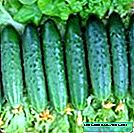
- Cucumbers Relay Relay F1 is a fairly old, time-tested variety, widely cultivated on an industrial scale

- Rodnichok F1 cucumbers successfully adapt to a variety of climatic and weather conditions, they can forgive the gardener for some flaws in agricultural technology
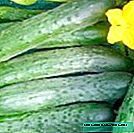
- Zozulya F1 cucumbers are unsuitable for pickling and pickling, not only because of the size
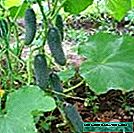
- Cucumbers Farmer F1 is not particularly harmful to temperature changes during the summer

- Liliput F1 cucumbers are immune to many diseases except powdery mildew
Video: review of the cucumber variety Relay F1
Varieties of cucumbers of different maturity
Cucumbers are considered to be early, ripening 38-45 days after the seeds germinate. In varieties with an average ripening period, this takes 48-55 days, in later varieties - 60 days or more. If you correctly select several varieties, the fruits from the bushes can be removed from mid-June to October.
Early
Zelentsy early ripening mainly eat immediately or prepare homemade canned food. The peel of them is usually thin, even in the refrigerator they will not lie for a long time, wilted. During the summer, such varieties can be planted twice.
Table: early ripening cucumber varieties
| Grade name | The most suitable region for growing | Ripening time | Self-pollinating | The appearance of the bush | Type of ovary | The presence of immunity | Dangerous diseases | Appearance and taste of fruits | Productivity, fruiting | Other characteristic features |
| Little finger | Midland of Russia, Far East | Early (42-46 days) | Not | Bush indeterminate, numerous lashes, long | Tufted (3-6 fruits) | Peronosporosis | Zelentsy 9.2-12.7 cm long, gain mass 114-120 g. The tubercles are rare, but large, the edge is weak. The skin is covered with blurry light spots. | Up to 7 kg / m².Fruiting lasts more than two months | It is cultivated mainly without shelter. The flowers are mostly female. The variety is insensitive to lower temperatures and generally to any weather vagaries. | |
| Satin F1 | Caucasus, south of the Volga region | Early (35-45 days) | Yes | The bush is quite compact, a little side lashes | Single | Cladosporiosis, mosaic virus | Real and false powdery mildew | Zelentsy grow to 8-10 cm and gain 88-108 g. They are densely dotted with large tubercles, almost monotonous. The edge is white, sparse. | 4,5 kg / m² | Demanding on agricultural technology and growing conditions, but at the same time tolerates drought and waterlogging of the soil well. Flowers are only for women. The percentage of substandard fruits is only 2-4%. |
| April F1 | The middle strip of Russia, the Caucasus | Early | Yes | The bush is not particularly powerful, a little side lashes | Mosaic virus, olive spotting | Root and white rot | Zelentsy grow to 15-25 cm and gain a mass of 160-300 g. The skin is dense, coarsens when it overrides, but the fruits do not change the color of the skin, do not exceed the "specified" length | 7-13 kg / m². Fruiting mass, the term of the productive life of the bush is not more than a month | Self-pollinated, but the "help" of insects increases productivity by 25-30%. In preservation, the fruits are not used. The hybrid is characterized by high cold resistance. |
Photo gallery: early varieties of cucumbers
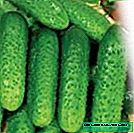
- Finger cucumbers planted mainly in open ground
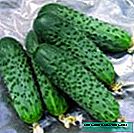
- Satin F1 cucumbers - one of the most popular Dutch hybrids in Russia

- April cucumbers F1 are often affected by various types of rot
Gardeners reviews
I believe that the cucumber of this variety under the cute name Palchik is very well suited for cultivation in personal plots and cottages, since it is a high-yielding variety. It allows summer residents to use them fresh, and to preserve, and even sell them. We have such cucumbers grow, strong, tall. They are best tied to a trellis. Then they will take up less space on the site, and harvesting will be easier. Such cucumbers can be grown with seedlings, which in the future are best planted in greenhouses. They are very fond of moisture, warmth. The soil should be fertilized, watering plentifully, but it is not necessary to fill too much. If the nights are cool (at a temperature of 15ºC), the greenhouse should be covered with a film coating. Harvest can be harvested 45 days after germination. Cucumbers are cute, small (up to 12 cm), although there are varieties and less. Do not let them outgrow so as not to spoil the quality. To taste, the cucumbers are excellent, crispy. My personal review of these cucumbers: a wonderful variety, worthy to take a place in any garden.
Tju//www.bolshoyvopros.ru/questions/1516226-ogurec-palchik-otzyvy.html
First of all, about the Palchik cucumber variety, it should be said that they have a fairly high yield, which allows you to eat plenty of cucumbers and canned. An important feature of these cucumbers is their size - an average length of 10 cm. And the appearance is mostly flat, like fingers. You will have the first crop of cucumbers in about 42 days. An excellent cucumber in both quality and taste.
Moreljuba//www.bolshoyvopros.ru/questions/1516226-ogurec-palchik-otzyvy.html
I want to say that Palchik made a great impression on me. Variety of Russian selection. Early. The period from seedlings to fruiting 44-48 days. Bee-pollinated plants, mainly female flowering type. Productivity is high. The fruiting period is long. The plants are powerful, they grow very quickly. This variety has a bundle type of ovary formation. Fruits are elongated-cylindrical, small in size, dark green, coarse-humped. Cucumbers have the ability to not turn yellow for a long time, which is very good for those who do not have the opportunity to make frequent gatherings. Commodity properties of fruits are good. The taste qualities of both fresh and canned and pickled cucumbers are simply excellent. Also good for making summer salads. Resistance to diseases is average. I have not been affected by late blight.
Maratik24//otzovik.com/review_849770.html
Video: description of cucumbers Satin F1
Medium
Varieties of cucumbers of medium ripening are characterized by universality of purpose, as well as good transportability and keeping quality. Harvesting from them, as a rule, stretches until the beginning of autumn or even to frost.
Table: common varieties of cucumbers medium ripening
| Grade name | The most suitable region for growing | Ripening time | Self-pollinating | The appearance of the bush | Type of ovary | The presence of immunity | Dangerous diseases | Appearance and taste of fruits | Productivity, fruiting | Other characteristic features |
| White Angel F1 | No limits | Medium (45-48 days) | Yes | Bush indeterminate, powerful, fast-growing | Puchkovy (2-3 fruits) | Almost absent | Any pathogenic fungi | Cucumbers are white or slightly noticeably greenish, with small small tubercles. Length reaches 9-11 cm, weight - 90 g | 12-15 kg / m² | It is cultivated mainly in closed ground. Regular fruit collection contributes to the formation of new ovaries. In addition, when overgrown, the seeds become hard, the skin becomes rough, the taste is significantly impaired. Closer to autumn, many cucumbers of a barrel or pear shape ripen. |
| Friendly family | No limits | Medium (43-48 days) | Yes | The bush is indeterminate, but not particularly tall and powerful. Branches willingly | Puchkovy (on the main shoot in the ovary 2-4 fruits, on the lateral - 6-8) | Increased resistance to pathogenic fungi typical for culture | Mosaic virus | Zelentsy grow to 10-12 cm and gain weight 110-120 g. The hillocks are numerous, often located. The skin is covered with short fuzzy strokes, the edge is sparse, whitish. The pulp is completely bitter, very dense | 10.3 kg / m² | It is grown mainly without shelter. Ripe cucumbers quickly outgrow. Fruits can be eaten immediately, but more often they are used for pickling and pickling |
| Competitor | No limits | Medium (46-55 days) | Not | The bushes are not particularly powerful, but there are many side lashes. | Single | Powdery mildew | Peronosporosis, mosaic virus | Zelentsy grow to 11-13 cm and gain weight up to 130 g. Tubercles and spines are few, soft, black. | 3-5 kg / m². Fruiting, if you're lucky with the weather, lasts about three months | Type of flowering mixed. When overripe, the skin cracks, acquires a yellowish tint, the flesh loses its flavor. With moisture deficiency, the fruits begin to noticeably bitter |
Photo Gallery: Popular Mid-Cucumber Varieties
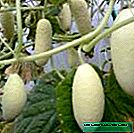
- Cucumbers look White Angel F1 is very unusual, but the taste is no different from ordinary green fruits
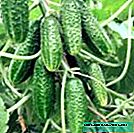
- Cucumbers A friendly family - a variety very common in Russia with a bundle type of ovary
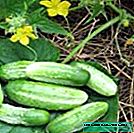
- Competitor cucumbers have innate immunity to powdery mildew
Video: cucumbers White Angel F1
Later
Late ripening cucumbers are most often well suited for pickling, pickling, and other harvesting. In regions with a climate that is not very suitable for culture, drop off lingering. Otherwise, the crop can simply not wait, especially when cultivated without shelter.
Table: Late Ripe Cucumbers
| Grade name | The most suitable region for growing | Ripening time | Self-pollinating | The appearance of the bush | Type of ovary | The presence of immunity | Dangerous diseases | Appearance and taste of fruits | Productivity, fruiting | Other characteristic features |
| Nezhinsky | No limits | Late (60-65 days) | Not | The bush is indeterminate, powerful, actively branching. Scourges extend up to 2 m in length | Single | Mosaic virus, olive spotting | Real and false powdery mildew | Zelentsy are short, ovoid, weigh about 80-110 g. There are many tubercles, spikes are black, rare | 4.9 kg / m² | Transportable, insensitive to temperature changes and drought, undemanding to substrate quality |
| Winner | No limits | Late (62-66 days) | Not | The plant is not particularly powerful, but the side lashes are long | Single | Very rarely affected by any fungal diseases | Mosaic virus | Zelentsy coarse, unusual lime color. Average length - 8-12 cm, weight - 120 g | 5-7 kg / m². Fruiting continues until the first frost | The variety is intended mainly for salting. It is cultivated most often in the open ground. Stable fruiting, despite the vagaries of the weather, tolerates cold and drought well |
| Brownie F1 | No limits | Not | Bush indeterminate, not particularly active branching | Powdery mildew, peronosporosis, cladosporiosis | Mosaic virus, white rot | Zelentsy spindle-shaped, grow to 7-8 cm, gain weight 80-100 g. Ribbed, tuberous to the touch. Not at all bitter. The skin is covered with blurry light spots, the edge is whitish, sparse | Without shelter, the yield reaches 7.6 kg / m², in closed ground this indicator increases to 10.2 kg / m². Fruiting lasts until the end of October | The vast majority of flowers are female. Hybrid is often confused with cucumbers. |
Photo gallery: varieties of late ripe cucumbers
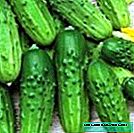
- Nezhinsky cucumbers are named after the Ukrainian city where they were bred
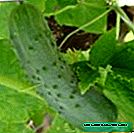
- Winner cucumbers are extremely unpretentious in care, do not impose special requirements for cultivation conditions
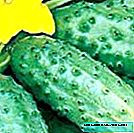
- F1 Domovenok cucumbers in the Russian Federation can be grown wherever gardening is possible at all
Bush cucumbers
Varieties from this category are distinguished by a very short (30-70 cm) main shoot and weak branching. The side lashes are also not long, but densely leafy. As a rule, they are characterized by massive fruiting, early ripening and the formation of a large number of ovaries.
Table: Popular Varieties of Bush Cucumbers
| Grade name | The most suitable region for growing | Ripening time | Self-pollinating | The appearance of the bush | Type of ovary | The presence of immunity | Dangerous diseases | Appearance and taste of fruits | Productivity, fruiting | Other characteristic features |
| Kid F1 | No limits | Early (40 days or less) | Not | The length of the main stem does not exceed 30-40 cm | Tufted (up to 6 fruits) | Peronosporosis, mosaic virus | Powdery mildew, cladosporiosis | Zelentsy grow to 9 cm in length, gain a mass of 80-90 g. The surface of the fruit is coarse-humped, whitish spines. The pulp is basically not bitter | 2-2.5 kg per bush | The fruits need to be harvested daily, otherwise the skin becomes rough, the flesh loses its juiciness and taste. |
| Ant F1 | It is cultivated mainly in the European part of Russia | Early (37-38 days) | Yes | The length of the main stem is 45-50 cm. | Tufted (3-7 fruits) | Mosaic virus, cladosporiosis, true and downy mildew | Rust, all kinds of rot | Zelentsy grow to 8-11 cm and gain weight 100-110 g, slightly ribbed. The tubercles are few, pronounced, the edge is whitish. Pulp completely without bitterness, devoid of voids | 10-12 kg / m² | Not to be confused with goosebumps. Flowers are exclusively female. Fruits regularly even in conditions far from optimal weather conditions. |
| Mikrosha F1 | No limits | Early (38-40 days) | Not | The length of the main stem is 40-45 cm | Tufted (4-6 fruits) | Any pathogenic fungi | Mosaic virus | Zelentsy reaches a length of 12 cm, gaining weight about 110 g. Form - elongated-ovate. The skin is almost smooth, spikes are few, black | 9-11 kg / m² | Hybrid normally refers to the vagaries of the weather. When reflashed does not change color to yellow |
Photo gallery: common varieties of bush cucumbers
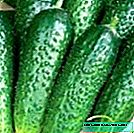
- The hybrid Kid F1 has a very short stem even for bush cucumbers
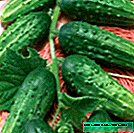
- One of the first cucumbers, Ant F1

- Cucumbers Mikrosh F1 do not lose their presentability and taste when re-singing
Mini cucumbers
Mini cucumbers, they are gherkins look very presentable in any workpiece. They are also good in salads - the flesh of small fruits is extremely tender and juicy, the seeds are almost absent. Zelentsy can be removed as soon as they reach a length of 3-5 cm, fully matured specimens grow to a maximum of 10 cm.
Table: Gherkin varieties of cucumbers
| Grade name | The most suitable region for growing | Ripening time | Self-pollinating | The appearance of the bush | Type of ovary | The presence of immunity | Dangerous diseases | Appearance and taste of fruits | Productivity, fruiting | Other characteristic features |
| Parisian Gherkin F1 | The Central region and the Black Sea region, but cultivate it in less suitable conditions | Early (40-45 days) | Not | Bush indeterminate, not particularly active branching | Tufted (6-8 fruits) | True and downy mildew, good resistance to cladosporiosis and mosaic virus | Rust, Alternaria | Zelentsy spindle-shaped, the lower part is covered with blurry pale strokes. The surface is coarse-humped, the edge is gray-black. Average weight - 55-78 g, length - 5-6 cm. Pulp, in principle, is not bitter. | 4-5 kg / m² | most of the flowers are female. Insensitive to drought |
| Brownie F1 | No limits | Early (42-45 days) | Yes | Bush indeterminate, weakly branching | Tufted (4-5 fruits) | Cladosporiosis, mosaic virus, powdery mildew | Alternariosis | Zelentsy grow to 8 cm and gain a mass of about 90 g. The tubercles are not particularly large, numerous | 12.4-13.1 kg / m² | Indoor landing is recommended. All flowers are female |
| Filippok F1 | No limits | Medium Early (48-55 days) | Yes | Bush of medium vigor, indeterminate, actively branching | Tufted (4-7 fruits) | Scab | Peronosporosis, angular and olive spotting | Zelentsy feel tangibly ribbed, with small tubercles. The skin is covered with longitudinal light stripes, the edge is white. Average length - 8-9 cm, weight - 85-95 g | Up to 10 kg / m² | The flowers are mostly female. These cucumbers gardeners are considered one of the best for canning. |
| Son of the F1 regiment | No limits | Medium Early (49-54 days) | Not | Bush indeterminate, medium growth | Beam (3 fruits each) | Scab, good resistance to peronosporosis | Powdery mildew, cladosporiosis | Zelentsy are slightly ribbed, 7–9 cm long and weighing 75–100 g. The tubercles are medium-sized, sparse, and black thorns. The pulp is genetically devoid of bitterness | 10.5 kg / m² | most of the flowers are female |
Photo Gallery: Varieties of Gherkins
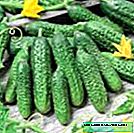
- Cucumbers Parisian Gherkin F1 is an indeterminate, but relatively compact bush

- The greatest danger for the Domovoy F1 cucumbers is alternariosis

- Filipp F1 cucumbers are immune to scab, but are often affected by other fungal diseases

- Cucumbers Son of the F1 regiment by maturity dates are mid-early
Video: cucumbers varieties Son of the regiment F1
Exotic varieties
Along with the "classic" cucumbers, gardeners are increasingly trying to cultivate unusual exoticism. And often experiments give a very good result. It is only necessary to familiarize yourself in advance with all the nuances of agricultural technology.
Indian Cucumber (Momordica)
It is a fairly close "relative" of the cucumber, belongs to the same pumpkin family. But still not a variety of cucumbers. The fruits resemble cucumbers slightly narrowed at the stalk, completely covered with different-sized "warts." The length reaches 25 cm. As it ripens, the color of the skin changes from dense green to saffron-orange, the fruits themselves seem to “open”, crimson-raspberry seeds become visible. The general view strongly resembles the crocodile's jaws open.

The fruit of an Indian cucumber looks so unusual that not everyone decides to try it
Lemon Cucumber (Crystal Apple)
This is a variety of cucumbers, albeit very unusual looking. The stem reaches a length of 5 m. The leaves are large, as if carved. Fruiting lasts from mid-July until the first frost. Productivity - about 10 kg per plant. Seedlings are planted in the ground in early June, seeds - in mid-May. You will definitely need a trellis. The culture is demanding on heat, does not tolerate frost, loves high humidity. In the greenhouse it is pollinated manually, in the open ground - by wind and insects. "Lemons" need to be planted away from ordinary cucumbers, with cross-pollination varietal characters are lost.

Lemon cucumber is very easy to confuse with citrus, especially from afar
The fruits of the plant, indeed, are extremely reminiscent of lemons. Unripe ones look like greenish balls with a rare edge.As they mature, they change color to whitish and sunny yellow. The peel is rough. The pulp is snow-white, cast with mother-of-pearl, the seeds are translucent, the juice is colorless. The average diameter of the fruit is 8 cm, weight - 50 g. In taste, it is practically no different from ordinary cucumber. Never bitter. Suitable for pickling and pickling. Fresh fruits are stored no more than 1.5-2 weeks.
Video: what lemon cucumber looks like
In principle, in the cultivation of cucumbers there is nothing particularly difficult. You only need to correctly select a variety or hybrid. All varieties presented in stores have many undoubted advantages, but at the same time they are not without more or less significant drawbacks. Therefore, the gardener needs to determine in advance the main selection criteria and be guided by them. The main restrictions are imposed by the climate in the region and the presence of a greenhouse on the site. You can also proceed from the appearance of the plant, productivity, size and purpose of the fruit, their taste.

































